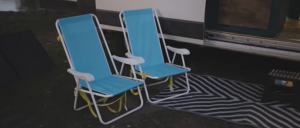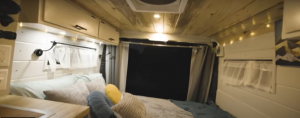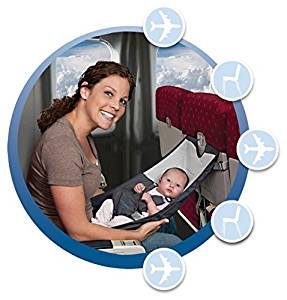Van Life Hacks For A Digital Nomad
Living the van life can be a liberating and adventurous experience, but it also requires clever organization and a bit of ingenuity to maximize the limited space. One of the most useful van life hacks is optimizing storage—use every nook and cranny for something functional. Under-bed storage bins, hanging organizers, and overhead compartments are essential for keeping gear, clothes, and food neatly stowed. For larger items, collapsible containers or stackable crates are perfect as they can be easily tucked away when not in use. To save space and keep things tidy, consider multipurpose items, such as foldable chairs, a compact table, or a bench that doubles as a storage unit.
Another key hack is to make the most of your van’s kitchen setup. Invest in compact, portable appliances like a two-burner stove, a small fridge, or a collapsible sink that can be easily stored when not in use. Use stackable cookware and nesting bowls, and opt for magnetic spice racks or adhesive hooks to keep things in place while driving. For water, a large refillable jug or a collapsible water tank can reduce the need for constant refills and help conserve space.
Comfort Vs Freedom
 In terms of comfort, insulating your van is a game-changer, especially for those who plan to travel in varying climates. Reflective window covers, insulating foam, or thick curtains can help regulate the temperature and keep the interior cool in summer and warm in winter. For added warmth at night, a small space heater or portable propane stove (used safely) can be a lifesaver.
In terms of comfort, insulating your van is a game-changer, especially for those who plan to travel in varying climates. Reflective window covers, insulating foam, or thick curtains can help regulate the temperature and keep the interior cool in summer and warm in winter. For added warmth at night, a small space heater or portable propane stove (used safely) can be a lifesaver.
Power is another essential aspect to consider—solar panels are one of the most popular and sustainable ways to keep your van powered. Installing a solar setup with a battery system allows you to charge devices, run lights, or even power small appliances without relying on external hookups. Additionally, use LED lights instead of traditional bulbs to save on power and extend battery life.
Finally, a great hack for maintaining hygiene on the road is setting up a portable shower system, whether it’s a solar shower bag or a collapsible camping shower. For bathroom needs, a small portable toilet or a privacy tent can make a big difference when you’re off the grid.
Overall, rv living hacks are all about efficiency, comfort, and creativity. By thinking ahead and making smart use of limited space, you can transform your van into a fully functional home that suits your adventure needs.
Is Van Life Conducive To Digital Nomads?
 Van life can be a highly practical lifestyle choice for digital nomads, but its success depends on several factors such as work requirements, travel preferences, and personal adaptability. For those who thrive on flexibility and adventure, living in a van offers an exciting way to combine travel with remote work, but it also comes with its own set of challenges that need to be carefully considered.
Van life can be a highly practical lifestyle choice for digital nomads, but its success depends on several factors such as work requirements, travel preferences, and personal adaptability. For those who thrive on flexibility and adventure, living in a van offers an exciting way to combine travel with remote work, but it also comes with its own set of challenges that need to be carefully considered.
Advantages of Van Life for Digital Nomads:
- Mobility and Flexibility: One of the biggest perks of van life is the ability to work from virtually anywhere. A van provides a mobile base, allowing digital nomads to explore new places, enjoy scenic views, and immerse themselves in different cultures while still being able to work. Whether you’re parked by the beach, in the mountains, or near a national park, the mobility of van life offers endless opportunities for both work and leisure.
- Cost Savings: Depending on your lifestyle, living in a van can be significantly more affordable than renting an apartment or staying in hotels. Many digital nomads embrace van life as a way to reduce living costs, especially since there are no traditional rent or utility bills. If you plan your routes wisely, you can also save money on accommodation by parking overnight in free campsites, rest stops, or public lands.
- Simplicity and Minimalism: Van life encourages a minimalist lifestyle, which can be refreshing for digital nomads looking to declutter both their physical and mental space. With limited storage and living space, you’ll be forced to prioritize only the essentials, streamlining your belongings and making it easier to focus on work.
- Connection to Nature: For digital nomads who value outdoor activities and the freedom to disconnect from city life, van life offers a unique way to experience nature. Whether it’s hiking, surfing, or stargazing, your “office” can change to suit the environment around you, making work feel more inspiring and less routine.
Challenges to Consider:
- Reliable Internet Access: One of the most significant challenges for digital nomads in van life is ensuring consistent and reliable internet access. Many remote workers depend on a strong Wi-Fi connection to do their jobs, and public spaces like cafes or libraries may not always be an option, especially in more remote or rural areas. A good solution is investing in mobile hotspots or using cellular data plans with high-speed internet to stay connected, but coverage can vary depending on location.

- Space Limitations: While living in a van offers freedom, it also means sacrificing personal space and comfort. Van life requires careful organization and adaptability since the living quarters are small and often cramped. The challenge is finding room for work equipment (like a laptop, camera gear, or other professional tools) while also having space for everyday essentials like clothes, food, and toiletries. For some digital nomads, the lack of space can lead to a sense of clutter or discomfort, particularly on long-term trips.
- Power and Utilities: Working remotely means you’ll need a reliable source of power for your devices, which is not always guaranteed in van life. Many van lifers install solar panels to power their laptops, phones, lights, and other electronics, but the amount of power generated can be limited, especially if you’re in cloudy areas or driving long distances. Carrying backup power banks, portable chargers, or investing in a high-quality battery system can help address this issue, but power management remains a constant consideration.
- Work-Life Balance: Van life can blur the lines between work and play, making it challenging to establish a clear routine or separation between your “office” time and leisure time. The temptation to explore or relax in nature can sometimes interfere with productivity. It’s important to create designated workspaces and set boundaries to maintain a good work-life balance.
- Legal and Practical Concerns: Depending on where you are traveling, parking overnight can be a challenge. Some places have regulations against overnight camping, and finding free or affordable parking spots can be tricky. Additionally, maintaining a van (gas, maintenance, insurance) and dealing with vehicle-related issues (breakdowns, repairs, etc.) can add unexpected costs and stress.
Tips for Making Van Life Work as a Digital Nomad:
- Internet Access: Invest in multiple internet options, such as a reliable mobile hotspot, a good data plan, and perhaps a satellite internet system if you plan to work in very remote areas. Plan your stops around locations that offer reliable Wi-Fi or consider co-working spaces in cities you pass through.
- Maximize Space: Use clever storage solutions like collapsible furniture, under-bed storage, and modular organization systems to make the most of your limited space. You might also want to consider a van with a high roof or more living space to allow for easier movement.
- Power Management: Install solar panels, carry portable power banks, and invest in a high-quality battery system to ensure you can work without running into power shortages.
- Create a Routine: Establish a clear work schedule and designate a specific space in the van for working, whether it’s a portable desk, a small table, or just a well-organized area for your computer and work materials. This can help you stay productive and maintain a work-life balance.
Van life is absolutely practical for digital nomads, but it requires careful planning and consideration. If you enjoy adventure, flexibility, and minimalism, and are comfortable managing the challenges of space and connectivity, it can be an incredibly rewarding way to work remotely while exploring new places. However, it’s important to be realistic about the potential difficulties and plan accordingly to make van life work for your specific needs.


 Ask anyone and they can tell you that the Amazon Rain Forest is one of the most diverse ecosystems in the world. There are more species of any given animal, plant, and insect here, than in any other part of our Earth. It is said that there are more than 40,000 plant types, 427+ mammals, 378+ reptiles, 400+ amphibians, 1,300 bird species, and an impressive 3,000+ freshwater fish. A person could survive for a very long time here as well, thanks to approximately 3,000 fruits that grow and are edible. If you want to talk about insects, a trip to the Amazon will put you in close quarters with 2.5 million different insect species. Keep in mind that not all of them are nice. There are some who also believe that more than 50 tribes live in the Amazon Rain Forest and none of them have ever had contact with the outside world. They are lost in the 2.1 million square miles of land that make up this amazing forest. Can you imagine all we can learn from the rainforest and perhaps the people and animals that live there?
Ask anyone and they can tell you that the Amazon Rain Forest is one of the most diverse ecosystems in the world. There are more species of any given animal, plant, and insect here, than in any other part of our Earth. It is said that there are more than 40,000 plant types, 427+ mammals, 378+ reptiles, 400+ amphibians, 1,300 bird species, and an impressive 3,000+ freshwater fish. A person could survive for a very long time here as well, thanks to approximately 3,000 fruits that grow and are edible. If you want to talk about insects, a trip to the Amazon will put you in close quarters with 2.5 million different insect species. Keep in mind that not all of them are nice. There are some who also believe that more than 50 tribes live in the Amazon Rain Forest and none of them have ever had contact with the outside world. They are lost in the 2.1 million square miles of land that make up this amazing forest. Can you imagine all we can learn from the rainforest and perhaps the people and animals that live there? There are many guided tours that you can take that venture into the Amazon. Most people say that it is a once in a lifetime experience. Along the Jungle Walks, people can see and learn about different plants, animals, and much more. On some tours you will have the opportunity to meet tribes that are willing to speak to visitors. You can get a bird’s eye view of the forest by walking a canopy bridge if you are not afraid of heights. One of the best things about taking a guided tour though is that you can find all you want to know about the people, plants, and animals that reside there. Your guide will know which plants are edible and which are medicinal. They may even be able to tell you the answer to the all-time question,
There are many guided tours that you can take that venture into the Amazon. Most people say that it is a once in a lifetime experience. Along the Jungle Walks, people can see and learn about different plants, animals, and much more. On some tours you will have the opportunity to meet tribes that are willing to speak to visitors. You can get a bird’s eye view of the forest by walking a canopy bridge if you are not afraid of heights. One of the best things about taking a guided tour though is that you can find all you want to know about the people, plants, and animals that reside there. Your guide will know which plants are edible and which are medicinal. They may even be able to tell you the answer to the all-time question,  The “baby days” are exciting and difficult to manage. Even a simple trip to the store can mean an aching back. Diaper bags with diapers, wipes, clothes, bottles, formula, nursing pads or covers, and more. As the infant reaches a few months old, you also add a few small little toys for them to play with. Binkies and blankies are also in the mix. Then you have the carseat or carrier for times when they are napping, and you do not want to wake them up. The list seems to go on and on. You also have necessities to take with you. They end up crammed in the diaper bag because a purse seems to add too much extra weight. Baby wraps and sling style carriers make things easier in a way. They allow your hands to be free, so you can carry groceries or the diaper bag, but does that help with travel? It may be time to rethink your infant items.
The “baby days” are exciting and difficult to manage. Even a simple trip to the store can mean an aching back. Diaper bags with diapers, wipes, clothes, bottles, formula, nursing pads or covers, and more. As the infant reaches a few months old, you also add a few small little toys for them to play with. Binkies and blankies are also in the mix. Then you have the carseat or carrier for times when they are napping, and you do not want to wake them up. The list seems to go on and on. You also have necessities to take with you. They end up crammed in the diaper bag because a purse seems to add too much extra weight. Baby wraps and sling style carriers make things easier in a way. They allow your hands to be free, so you can carry groceries or the diaper bag, but does that help with travel? It may be time to rethink your infant items. In today’s world, parents never take a break. Their infants are going places that our own moms would never have taken us. Infants that are only a couple months old are going to car shows, beaches, amusement parks, and more. Those parents have figured out the key to a successful trip with their infant. Isn’t it time that you discover what will work best for you? You and your baby will enjoy the time out of the home if you do!
In today’s world, parents never take a break. Their infants are going places that our own moms would never have taken us. Infants that are only a couple months old are going to car shows, beaches, amusement parks, and more. Those parents have figured out the key to a successful trip with their infant. Isn’t it time that you discover what will work best for you? You and your baby will enjoy the time out of the home if you do!
